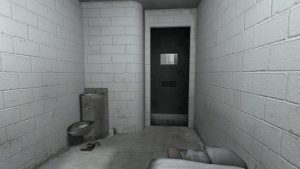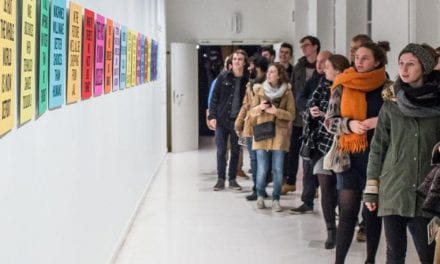It was suspected to be journalism’s next revolution, but it struggles to find its place. Virtual reality (VR), a technology that allows you to see a 360 ° environment, isn’t taking off. If some initiatives stand out, the public is not always receptive. At least, for the time being.
The media had seen in VR the future of video reporting by creating engaging, real life reports. In 2016, the American newspaper The New York Times even dedicated a whole column to it, Daily360, on which it still regularly publishes immersive videos.
The British newspaper The Guardian also tried its luck in 2016 by releasing “6×9”, an immersive documentary about solitary confinement. It places viewers in a virtual cell, telling a story of the psychological damage that extreme isolation can cause.
These documentaries are usually simple 360 degrees videos that can be viewed either using a VR mask for the full experience, or simply using a phone or laptop and moving through the image by dragging a finger or computer mouse across the screen. However, the latter method causes the immersive side of the experience to be diminished.
VR in the news media still seems to be stuck in an experimental phase and it didn’t know the boom that the most enthusiastic ones predicted at the beginning. This is probably because it has low quality production and the equipment for the public used to be too expensive and not that pleasant.
That being said, VR documentaries keep a lot of their potential as VR masks are getting more accessible to the audience. It is expected to cost ten pounds for a cheap VR mask that works with a smartphone today. That price is far from the ones that were in the market when the new technology first arose.
Sam Stewart, the Program Leader of Journalism 360 at the Online News Association (an initiative focused on analysing traditional journalistic techniques in VR), said:
As the medium [VR] is constantly evolving there is not one answer to strengths and weaknesses or how audience is reacting. I think in general the field is ripe with opportunity to really allow people to engage, feel empathy, and better understand content in context.
Furthermore, this fairly new technology is slowly making itself known in several other sectors, such as art, video games, tourism, health and education…
Journalism could soon be added to this list thanks to initiatives aimed at establishing new tools for reporters and the audience.
Today, VR documentaries are effective for transmitting emotions and have been proven for being effective for transmitting information as well.
Sol Rogers, CEO and Founder of REWIND, an immersive content studio, said:
Research suggests that we retain more information and can better apply what we have learned after participating in virtual reality. This is the power of VR and why immersive journalism really can add an extra dimension to reporting.
We still don’t know which the best topics for VR documentaries are: community issues, big reportage, audio reportage, underwater videos etc. After all, just because the technology exists, it doesn’t mean that every topic is suited for it. This discordant factor is one that journalists should pay attention to throughout the following years.
While we are waiting on the appearance of a consensus about this subject, medias wishing to experiment with VR should do so carefully, as it may be difficult to gain back viewers disappointed by their experience.
If you want to experience a Scotia Scoop Production VR and Interactive video, click here. Simply explore the V&A Museum in Dundee and click on the visual hotspots to move from one place to the other.
Featured Image Source: Freepik.com






